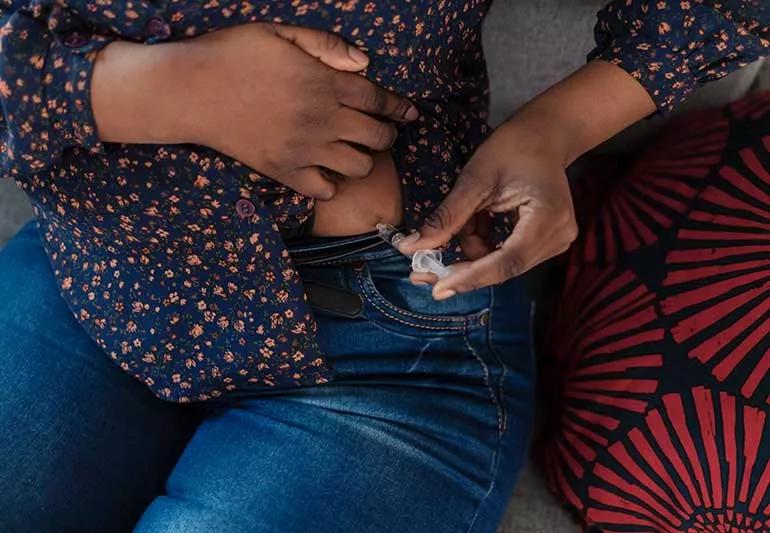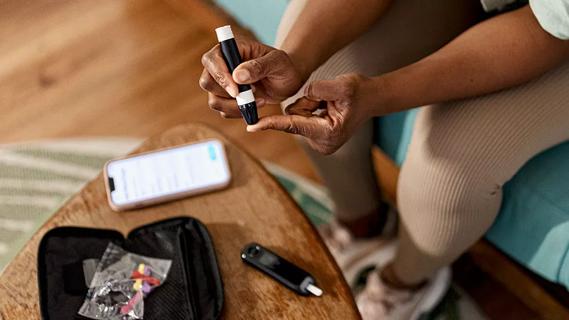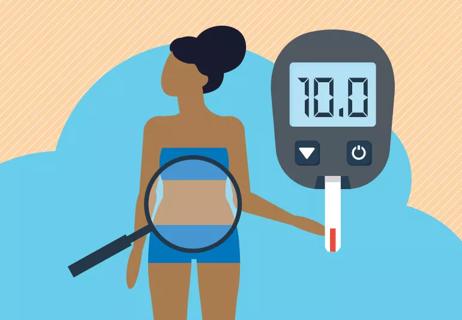Collect your supplies, wash your hands, prep the site ... and take a deep breath

If you’re like us, you may have a slight (OK, major) fear of needles. And if you have a medical condition that requires you to give yourself a subcutaneous (subQ or SQ) injection at home, then you may feel anxious or nervous about having to do so.
Advertisement
Cleveland Clinic is a non-profit academic medical center. Advertising on our site helps support our mission. We do not endorse non-Cleveland Clinic products or services. Policy
But with some education and practice, you can become a pro at giving yourself a shot at home. And as the needle is typically small and short, it should cause minimal pain.
Registered nurse Chrystle Hoyt, RN, explains what a subcutaneous injection is and how to correctly give yourself a shot at home.
A subcutaneous injection uses a short needle to inject a mediation into the fatty tissue layer between your skin and muscle — or right under your skin.
Typically, medication delivered this way is absorbed by your body slowly, around 24 hours after the injection. And the amount typically used for a subcutaneous injection is small — around 1 milliliter (mL).
Depending on the medication, you may be required to give yourself an injection daily, weekly or once a month.
There’s a variety of medication that can be delivered as a subcutaneous injection, including:
Your healthcare provider may recommend a subcutaneous injection for conditions like Type 2 diabetes or an allergic reaction.
“There is a variety of benefits to subQ injections at home, such as minimizing appointments and travel,” notes Hoyt. “Injections can be tailored to fit your schedule and there may be insurance requirements and/or cost factors.”
Advertisement
When thinking about giving yourself a subcutaneous injection, you want an area on your body that has an accessible layer of tissue.
There are a few different areas where you can give yourself a subcutaneous injection. Common areas include:
If you’re using your abdomen, you want to make sure you’re injecting your medication at least 2 inches away from your belly button.
And when it’s time for another round of shots — whether that’s tomorrow, next week or next month — you want to choose a different area.
“Tissue changes occur if injections are given in the same place every time, and this can cause the medication to not be absorbed properly,” explains Hoyt. “In addition, site rotation decreases chance of bruising and discomfort.”
You may experience minor pain or bruising at the injection site, but your chances of discomfort lessen if you inject the medication correctly. Hoyt shows us how:
You’ll need the following:
“Proper disposal of sharps is important to avoid accidental injury to people/pets and spread of infections that can cause serious health conditions,” states Hoyt. “Obtaining a sharps container is as easy as using an empty milk jug or laundry detergent bottle. Sometimes, pharmacies may issue a small sharps container.”
Before you start, make sure you wash your hands thoroughly with soap and water. Then, dry your hands.
“Handwashing is the best and easiest way to prevent the spread of germs,” says Hoyt. “Remember to scrub your hands for at least 20 seconds — that’s like singing ‘Happy Birthday’ twice.”
Sit or lie in a comfortable position so you can easily reach the part of your body where the injection will go.
“A lounge chair, recliner or bed is ideal,” recommends Hoyt. “Breathing can help you relax and stay calm as you administer your medication. We tend to hold our breath when we’re tense. It’s OK to feel nervous the first time.”
Clean the area you’ve selected for your injection with an alcohol swab. Allow the area to dry.
Prep your syringe or auto-injector pen, according to instructions provided by the manufacturer. If the syringe isn’t pre-filled, you may also have a vial of medication that’s used to fill a single-use syringe.
“For medication to be effective and prevent yourself harm, it’s vital to follow the directions from your provider or from the manufacturer,” stresses Hoyt.
Now that the injection site is prepped and the medication is ready, it’s time to administer the shot. Here’s what to do:
Advertisement
While the idea of giving yourself a subcutaneous injection can be scary at first, your healthcare provider will work with you to answer any questions and make sure you feel comfortable.
And if you’re experiencing pain or are nervous about giving yourself a shot, Hoyt says you can do the following in advance:
Advertisement
“Remember why you need to give yourself the medication. Your health is important. With practice you will gain confidence in yourself and self-injection will become easier,” reassures Hoyt.
“Your medication may be prescribed as a self-injection, but a spouse or family member can also learn how to administer injections and support you in this process.”
Advertisement
Learn more about our editorial process.
Advertisement

Type 1 diabetes happens when your body doesn’t make insulin, while Type 2 happens when your body can’t use insulin properly

Diet sodas are associated with weight gain, and may even cause insulin confusion

How these lifestyle changes may help restore insulin sensitivity

This time-tested treatment isn’t always on people’s radar

Bleeding is a risk and warrants taking care, but the reward of this lifesaving medication is great

Type 2 diabetes isn’t inevitable with these dietary changes

Applying a hot or cold compress can help with pain